World 🢖 Asia 🢖 Turkmenistan
Ancient cities and towns 🢔 Settlements 🢔 Archaeological wonders 🢔 Categories of wonders
Wonder
Merv
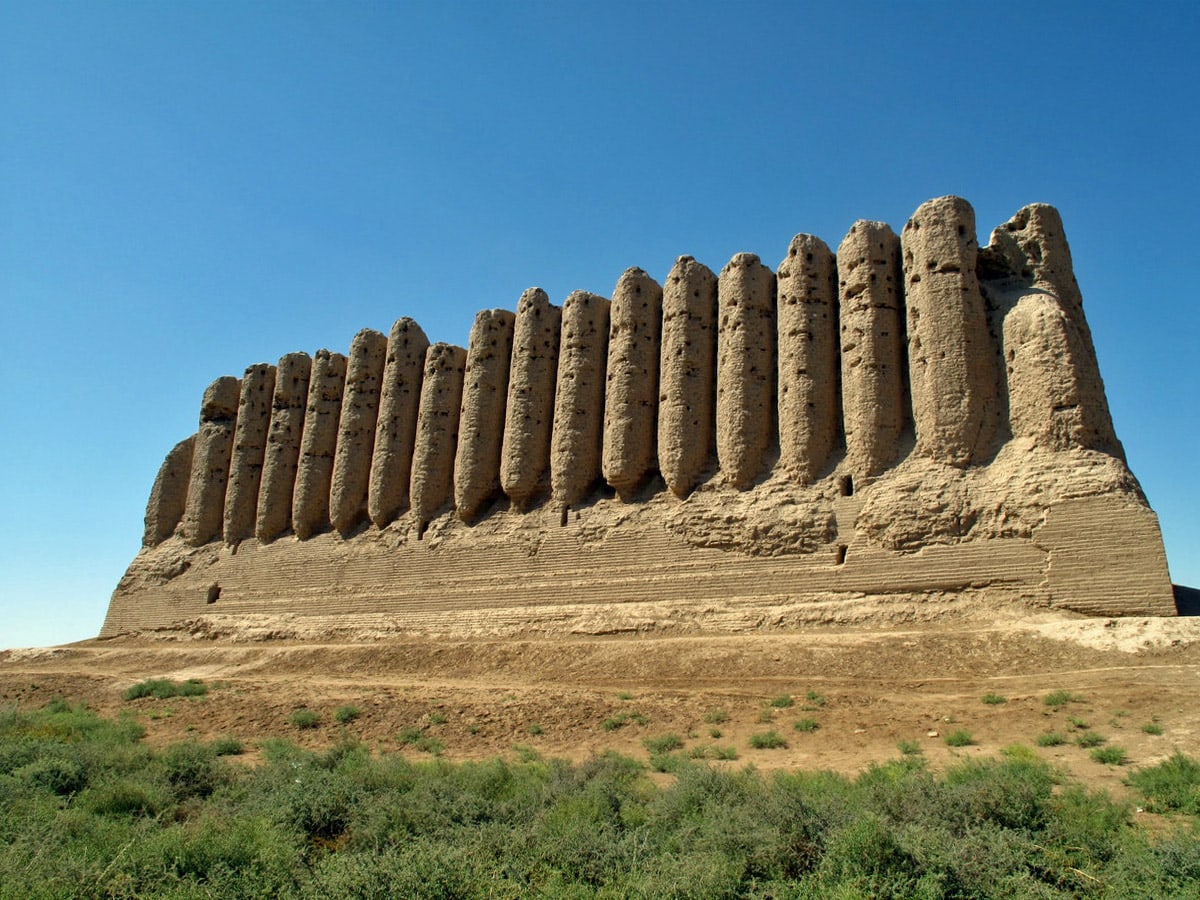
 In short
In short
Nothing is forever – even Merv today is in ruins. This city existed for some 2000 years and for a while it was the largest in the world. Remember this, New York, Hong Kong or London!
 51.7%
51.7%
GPS coordinates
Location, address
Name in Turkmen
Alternate names
Founded
Flourished
Abandoned
UNESCO World Heritage status
Map of the site
If you see this after your page is loaded completely, leafletJS files are missing.
 In detail
In detail
History
Merv differs from most cities of the world – it has survived and flourished under more than 10 different cultures, languages, and religions, always remaining a splendid center of trade, science, and art. There was needed a terrible tragedy to erase this vivid city – and it happened… It is hard to believe all of this today when visitors see just somewhat bland adobe walls and remnants of several buildings scattered over an enormous, deserted plain.
Below follows a timeline of this amazing city:
- the 3rd millennium BC: small villages start to develop at the inland delta of Murghab River, where the life-bearing waters of the river spread in the desert and disappear.
- 2300 – 1700 BC: settlements evolve, they form a part of Bronze Age civilization, named Bactria-Margiana Archaeological Complex by scientists.
- around 670 BC: Cyrus the Great expands Persian Empire (Achaemenid Empire) to Central Asia and Merv is founded. Most likely it was one of the most important centers of Central Asia. Merv is mentioned in several ancient writings.
- around 330 BC: Persian Empire is conquered by Alexander the Great. Although Pliny the Elder writes that Alexander was in Merv, this most likely did not happen. Merv for a short while is renamed to Alexandria.
-
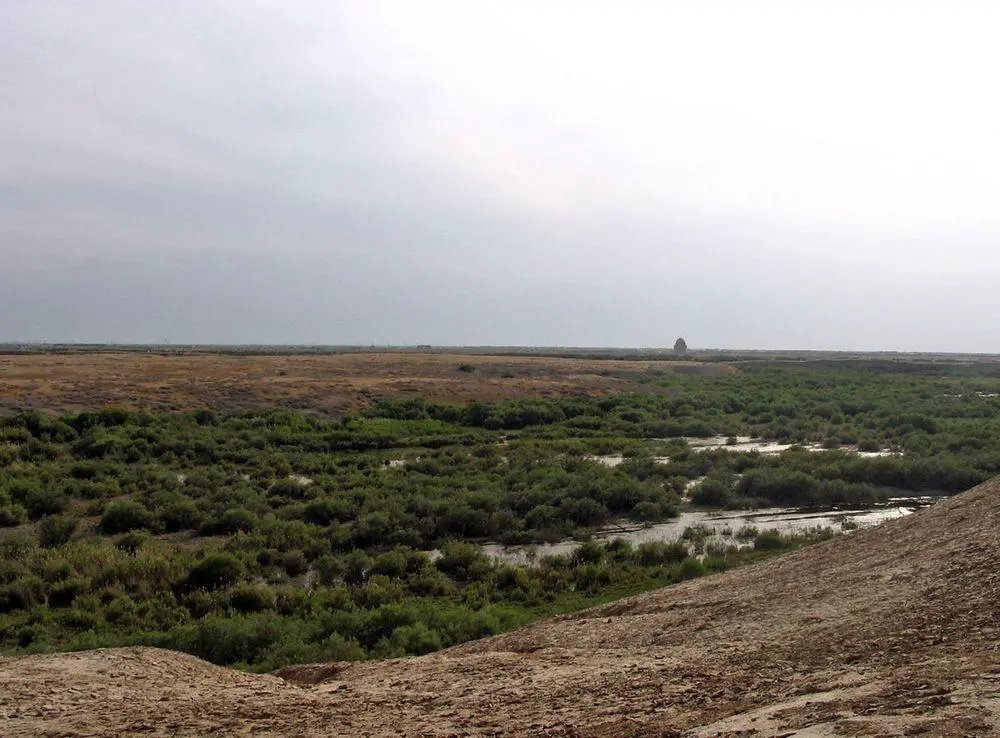
Site of Merv. Once upon a time here was one of world’s largest cities / Paul, Flickr / CC BY-SA 2.0 312 BC – middle of the 2nd century BC: Merv is renamed Antiochia Margiana, it is the capital of the Province of Margiana, part of the Seleucid Empire. Influence of Hellenistic culture is observed.
- around 165 BC – 224 AD: Merv is an urban center in the Parthian Empire (generation of Persian State). Develops Silk Road and Merv is a major center on this ancient trade highway for some 15 centuries.
- 224 AD – around 651 AD: Merv is included in Sassanid State (for a while – also in Kushan State). As the Murghab River steps back towards the west, a new city – Gäwürgala – is built next to the old one. In this multicultural trade city are built Buddhist, Christian, Zoroastrian, and other temples. Merv is a major center of Buddhist learning and an important Christian center – the seat of East Syrian metropolitan province (553 – the 11th century AD). An enormous church was built, now its ruins are named Kharoba-Koshuk.
- 651: near Merv is killed the last Sassanian ruler Yazdegerd III, the city is taken by Arab army, Islam is brought to these ancient Persian lands. Merv becomes the capital of Khorasana – a province of Umayyad state.
- 671: in order to dilute the local Persian population and to conquer and subdue Central Asia, 50,000 Arab troops are sent to the city. Soon Merv becomes the most fervent supporter of Islam in Central Asia, earlier than the remaining Persia.
- 748: Merv for a short while becomes a center of the newly founded Abbasid Caliphate, but the capital soon is moved to a newly built city – Baghdad. Merv provides urban planning and architectural inspiration for Baghdad and other Arab cities. The city is increasing, more and more scientists are coming to study in the enormous libraries of Merv.
- The 9th century: Arab rule gradually becomes weaker and Persians take over the governance of Merv. Here are more than 10 great libraries, the city still is a major center of Christianity and at the same time – one of the great centers of Islam teaching.
- 813 – 818: Merv is declared as a center of the Muslim world by caliph al-Ma’mun.
-
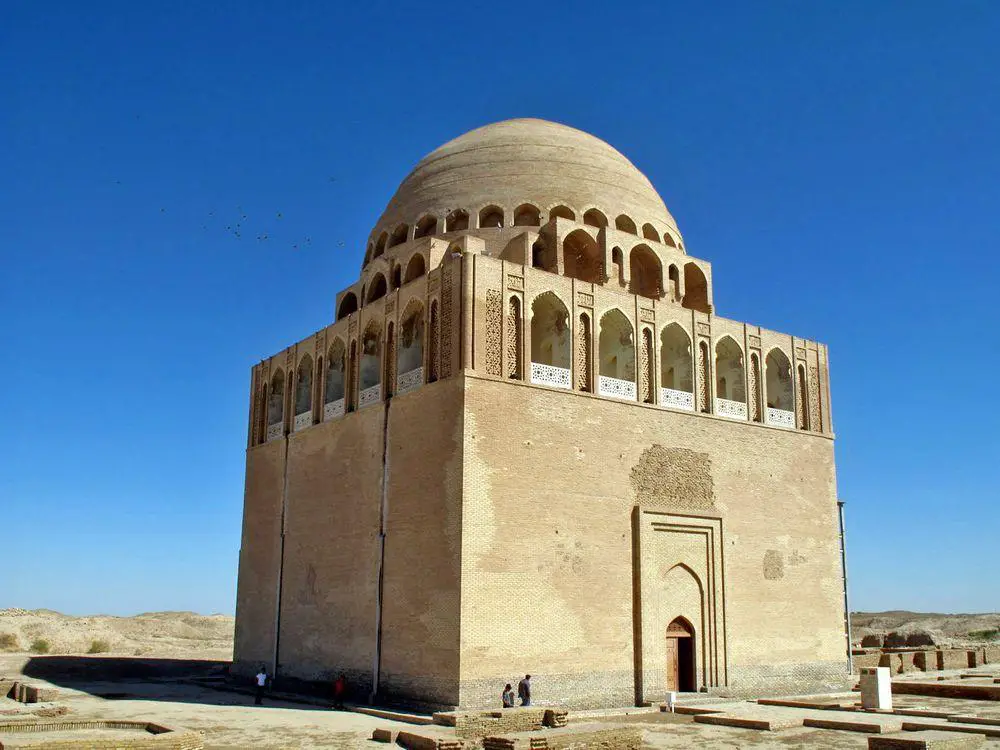
Mausoleum of Sultan Sanjar – first Seljuk ruler of Merv / Peretz Partensky, Flickr / CC BY-SA 2.0 1037: Turks (Seljuks) peacefully take over the city, and Merv becomes the main Seljuk city. Golden times of Merv start: the city turns into a large metropolis with many interesting amenities: a giant market, and diverse cultural institutions.
- Middle of the 12th century – early 13th century: Merv is one of the largest cities in the world. It is assessed that in the middle of the 12th century, there lived some 200,000 people, but in the middle of the 13th century – up to 500,000 people.
- 1153: the city is pillaged but quickly recovers.
- 1221: year of tragedy. Merv opens its gates to Mongols and intruders kill almost all inhabitants of the city as well as hundreds of thousands of refugees from other cities who hid behind the walls of the city. Just a few hundred people are left alive, mostly artisans and scientists. It is possible that up to one million died. This is one of the most tragic events in human history, still posing many questions about the dark side of the human soul.
- Middle of the 13th century: fortifications are hastily rebuilt but the metropolitan spirit never returns to Merv.
- the 13th century – 1505: Merv is part of the empire of Timur.
- 1505 – 1788: Merv is a smaller city of local importance that is governed by Uzbeks, then – Persians, and finally by Bukhara.
- 1788 – 1789: Merv is razed down upon the order of the Emir of Bukhara and irrigation systems are deliberately destroyed. People are displaced to other areas of Bukhara and many have retained their Persian self-identity up to this day.
- the late 19th century – now: archaeological exploration started and is ongoing.
Description
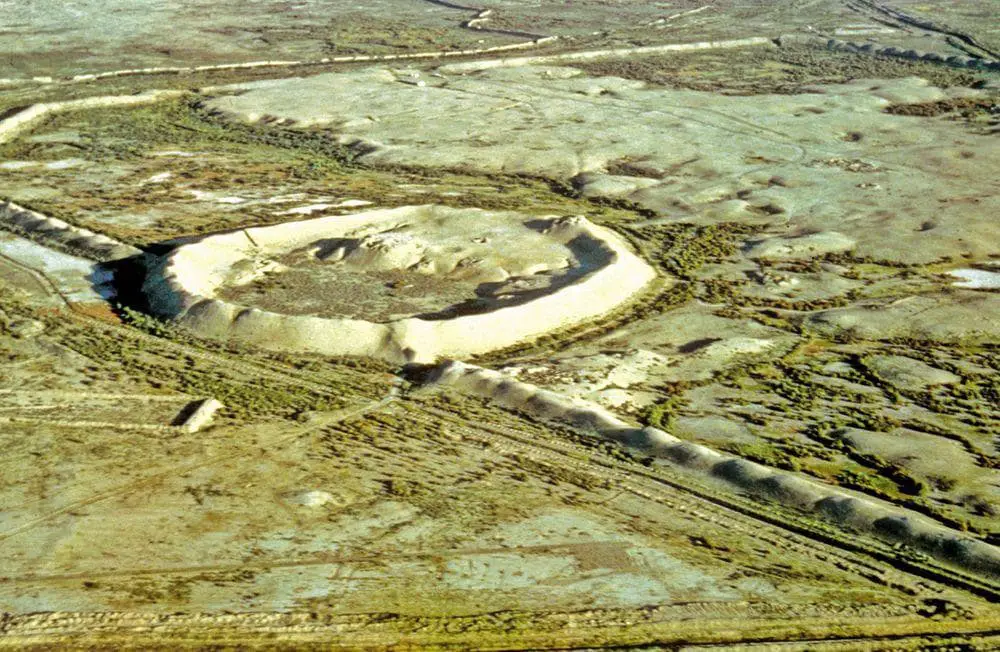
Merv is the best-preserved Silk Road oasis in Central Asia and represents a cultural monument of global importance. The city was huge – its central part is 5 by 5 km large. Murghab River changed its course towards the west – thus the city also over time was extended to the west.
City developed as an oasis city overlooking Murghab River, on a trade route between Persia to the south and Bokhara and Samarkand to the north, and later – on Silk Road.
Although now this area looks semi-deserted, it was very fertile in ancient times. Here was built an intricate system of irrigation canals and all kinds of local crops and fruits grew here. Rather early – in the 5th century AD – here was grown also cotton and silk. In Merv oasis were developed famous and demanded breeds of horses and other animals. It seems also that locals produced high-class weapons and other items, in Merv was developed steel industry.
Merv is a very complex monument of history: it consists of several walled cities located next to each other.
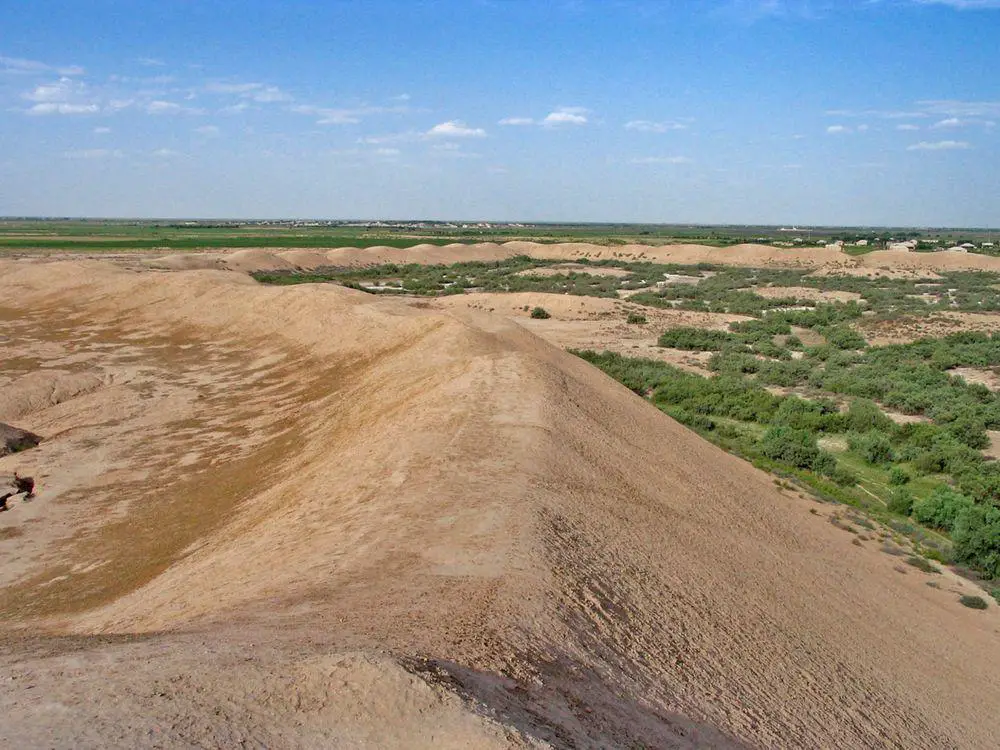
These cities are:
- Erk Gala – oldest and smallest one (500 by 400 m, 12 – 20 ha), developed in Achaemenid times, starting from the 7th century BC. It has an impressive ringwall around – this ringwall has rooms inside and it seems, that local people gladly lived inside it during the hot and cold times of the year. Erk Gala later served as a spiritual center of the city.
- Gawurgala (Gyaur Gala) partly surrounds Erk Gala and is located to the south of it. This city was built during the Hellenistic and Sassanid times, starting from the 3rd century BC until the middle of the 8th century, well after the coming of Islam. The city was inhabited also in later times – mostly as an industrial suburb to the new city. Especially impressive are the remaining walls of Gawurgala. The 7.4 km long fortifications consist of three walls, each built on top of the previous. Nowadays this city provides much information about crafts in early medieval times as well as valuable numismatic material. Here is located Beni Mahkan mosque. Here are found also remains of Buddhist and Christian temples.
-
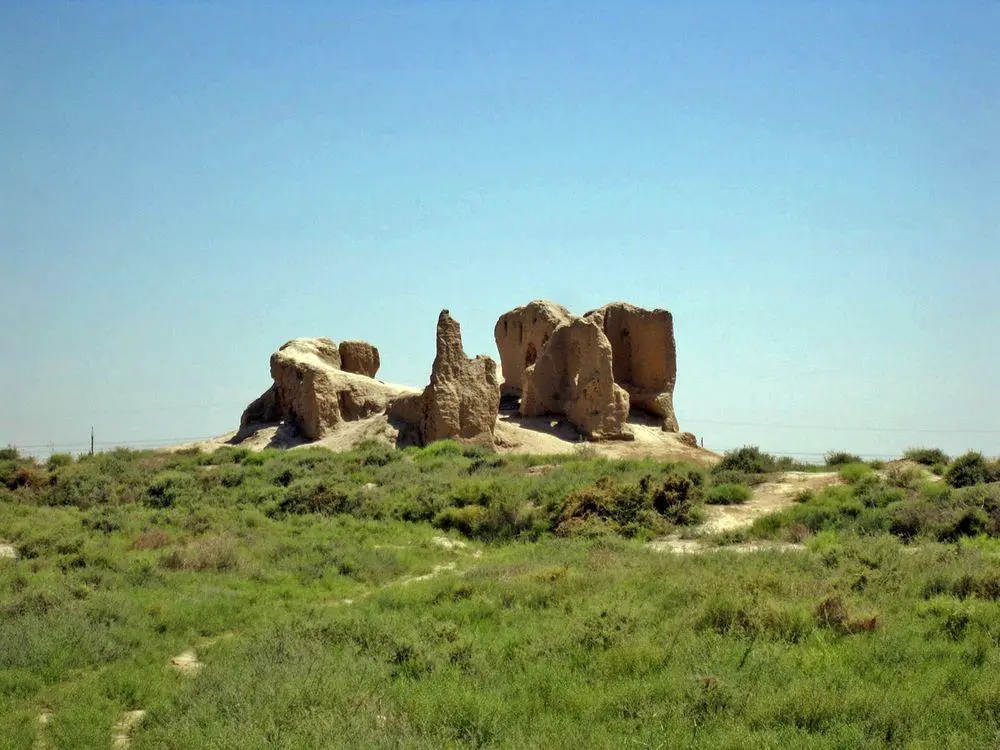
Small Kyz Qala – remnants of inner city palace / Paul, Flickr / CC BY-SA 2.0 Soltangala (Sultan Kala) – by far the largest city which was built in Abbasid and Seljuk times. Construction of this city started in the 8th century to the west of Gawurgala. This city was built very fast and encircled with approximately 12 km long fortification walls. Characteristic buildings here are köshks – residential buildings of influential and rich people. These köshks were similar to two-flor palaces with corrugated walls. The most impressive structure here (and in the whole Merv) is Grand Kyz Qala (Greater Gyzgala) palace (from Turkmen "maiden’s fortress" which was built outside the city walls, to the west from it. This palace had 17 rooms and a central courtyard. Another city palace is Small Kyz Qala (Lesser Gyzgala) with very massive walls. Impressive are also later Seljuk buildings – remnants of the palace (possibly Sanjar palace), mausoleum of Sultan Sanjar (the 12th century), where the later has been preserved almost intact. An unusual structure is Kepderihana – possibly a pigeon roost or, possibly, a library. The walls of this city still are 8 – 9 m tall. Later in front of these walls was built one more and also the suburbs (Isgendergala) were surrounded by a massive, 5 m thick wall.
- Shaim Kala – extension of metropolis which was developed since the 7th century AD. Also, this part of the city was enclosed in fortification walls.
- Abdyllahangala (Abdullah Khan Kala) – is a smaller city, built in Timurid times (the early 15th century) to the south of the older cities.
- Bairam Ala Khan Kala – fortified extension, built in the 18th century, now also in ruins.
Remnants of many buildings are scattered around the areas of these cities and also outside their walls.
 Linked articles
Linked articles
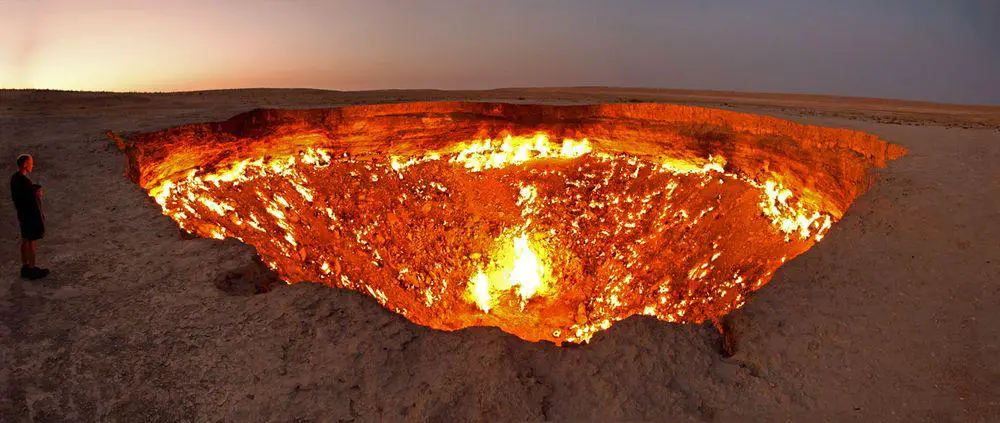
Wonders of Turkmenistan
Turkmenistan is mostly covered with deserts – but it has not been always like that. In the past here developed some of the earliest cities in the world.

Abandoned cities and towns
The main impression created by abandoned cities is intimate. This is a mixed feeling of sadness, unclear anxiety (“my city will not be eternal either”), and at the same time – inspiration from the abilities of our ancestors. Long ago, without electricity, paper, or different mechanisms, they managed to create magnificent structures, that covered many square kilometers.

Ancient cities and towns
It turns out that urban planning is a very old profession. The urban fabric of ancient settlements – their structure and evolution gives a lot of food for thoughts about the nature of humans and civilization.
Wondermondo includes in the category of ancient cities and towns those settlements which have developed as urban areas at least 1500 years ago: around 500 AD.
 Recommended books
Recommended books
Turkmenistan: Far Flung Places Travel Guide
The second edition of the bestselling Far Flung Places guide to Turkmenistan, with increased coverage of all major cities, and updated listings. Turkmenistan, a country once closed to visitors during its time as a Soviet republic, is now attracting more intrepid tourists. Beautiful ancient Silk Road cities contrast with striking marble-clad modern architecture. Mix in unconventional leaders, an overwhelming choice in types of vodka, and a massive gas crater burning in the middle of the desert.
Insight Guides Silk Road
Insight Guide The Silk Road is the complete illustrated guide to one of the world’s ultimate travel adventures. Passing right through the heart of Asia, this ancient trade route traverses a quarter of the globe from the heart of China to the Mediterranean via a vast, inhospitable expanse of mountains and desert.


